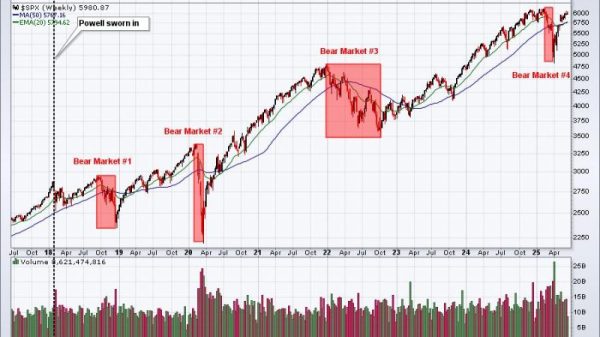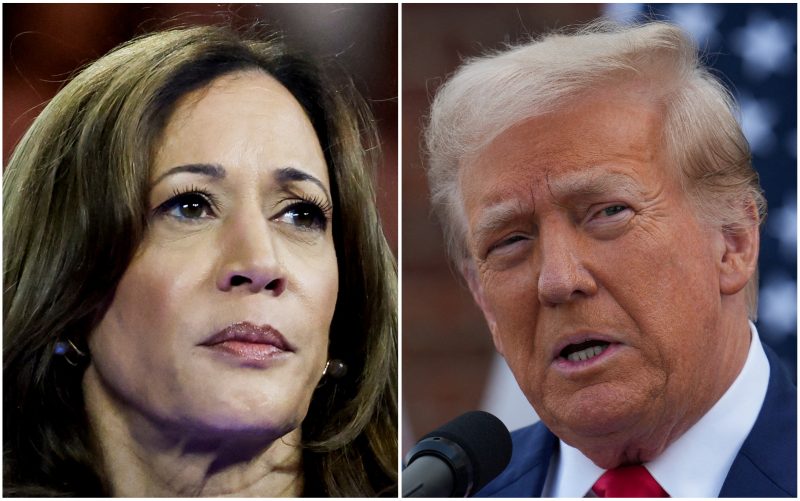The nation’s presidential candidates have been so busy politicking that they’ve paid too little attention to their ultimate goal — governing.
Only within the last two weeks have the campaigns of Democratic Vice President Kamala Harris and Republican former president Donald Trump named the leaders of their transition teams. President Joe Biden didn’t have a transition operation in place that Harris could use.
“It’s late in the day,” is Max Stier’s sober assessment of the candidates’ timing.
As president and CEO of the nonpartisan Partnership for Public Service, which started the Center for Presidential Transition in 2008, Stier has closely watched and participated in the unglamorous, unseen work of changing the nation’s administrations.
While the candidates are slacking in their transition duties, administration officials say their agencies are meeting government timelines. This week the General Services Administration (GSA), which has a leading role in presidential transitions, offered both candidates office space and services, which will be available when the campaigns are ready to use them.
Although Election Day is more than two months away, time is critical because organizing a new administration is a mammoth task.
The tardiness means transition leaders will have much to accomplish without much time. Harris chose Yohannes Abraham, who directed Biden’s transition into the White House before serving as chief of staff and executive secretary of the National Security Council and then U.S. ambassador to the Association of Southeast Asian Nations. Trump named two transition co-chairs, Howard Lutnick, chairman and CEO of Cantor Fitzgerald, a financial services firm, and Linda McMahon, who led the Small Business Administration when Trump was president.
Since 2012, “modern presidential candidates have started their transition work substantially earlier, in springtime of the election year,” Stier said at a press briefing, “because of a recognition of the lift that is really involved … it is possible to try and catch up. But the reality is that both candidates have a lot to do.”
Neither campaign responded to questions, so we don’t know their excuses for their tardiness.
Not knowing Biden would withdraw his candidacy until last month, Harris had a late start as a presidential candidate and all that comes with it. Unfortunately for her, she couldn’t convert Biden’s transition effort because he didn’t have “a real transition operation to inherit,” Stier said during a phone interview.
Trump should know the importance of an early start, but his two transitions, entering and leaving the White House, after the 2016 and 2020 elections respectively, were examples of what not to do. He had a good transition operation for 2016 led by former New Jersey governor Chris Christie, until Christie was abruptly fired soon after Trump’s electoral college victory. Other staffers quickly were purged. Disruption and delay followed.
No transition, hopefully, will ever be as calamitous as the one following the 2020 vote, when Trump would not admit he lost the election. Even before the Jan. 6, 2021 attack on the U.S. Capitol by Trump supporters, a violent attempt to remain in office that Trump has been federally charged with instigating, “there were many instances,” Stier said, of “outright hostility or lack of cooperation” toward the incoming Biden administration.
By being late to the game, “the danger is they’re not going to be prepared on day one,” said Gail Lovelace, a former GSA director presidential transition. “You want them to be able to hit the ground running on January 20th at 12 noon,” Inauguration Day.
To facilitate that, GSA’s Aimee Whiteman, the federal transition coordinator, wrote to Harris and Trump on Tuesday offering “assistance and a variety of services, including office space, furniture, equipment, and other incidental services.”
Office spaces, with laptops and other technology, are ready for both candidates’ teams in GSA’s headquarters on F Street NW, allowing for some potentially politically charged elevator encounters. The space is large enough for at least 100 staffers per candidate, according to a report Whiteman sent to Congress in May. The agency has a $10.4 million budget for pre-election services in fiscal 2024 and requested $11.2 million for fiscal 2025, which includes $7.2 million for post-election, incoming administration expenses.
Noting the expected hiring of 4,000 political appointees, including 1,300 needing Senate confirmation, and the preparation required “to assume the massive responsibility of the operations and management and services of over 400 federal entities,” Center for Presidential Transition Director Valerie Smith Boyd told reporters “the period between the election and the inauguration is just too short to do all of that work.”
Yet, “it’s never too late,” Stier added, “You have the time that you have. It is a much harder task when you effectively … cut it by … four months, in terms of what would be ideal.”




















